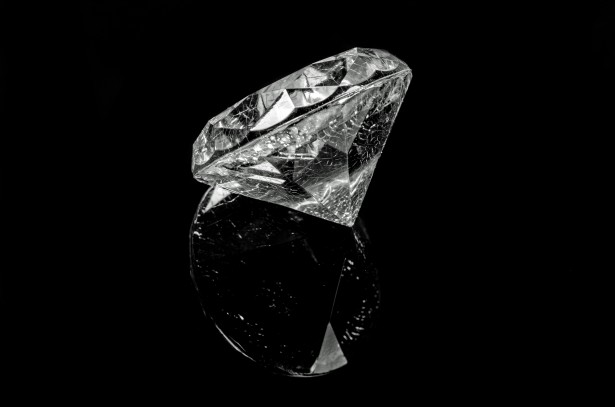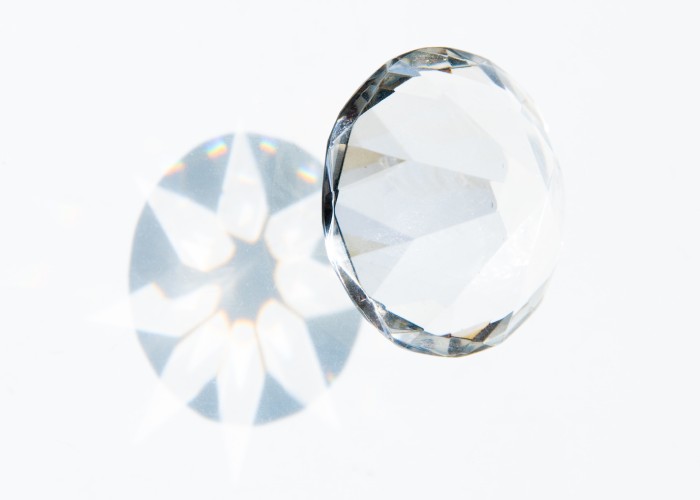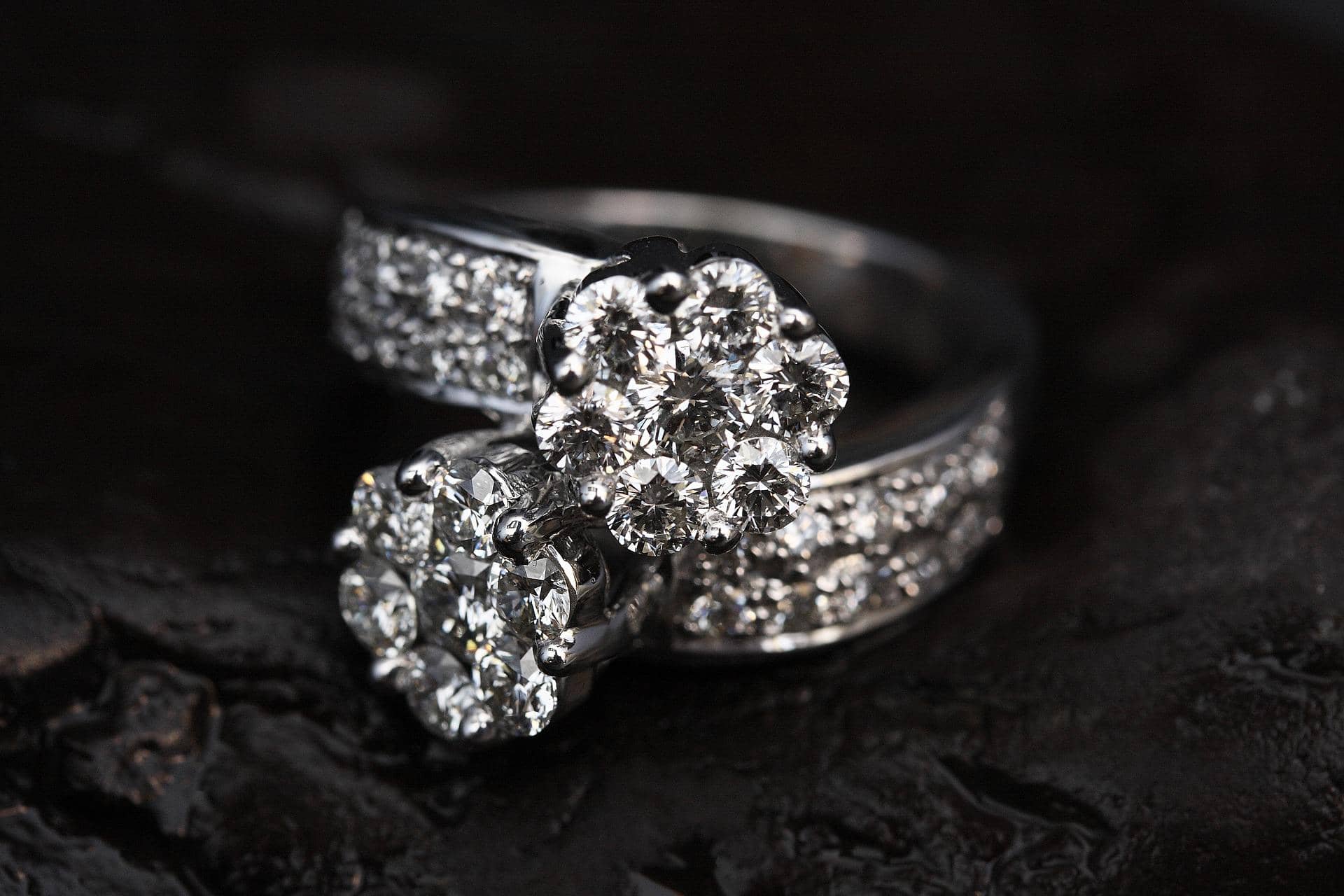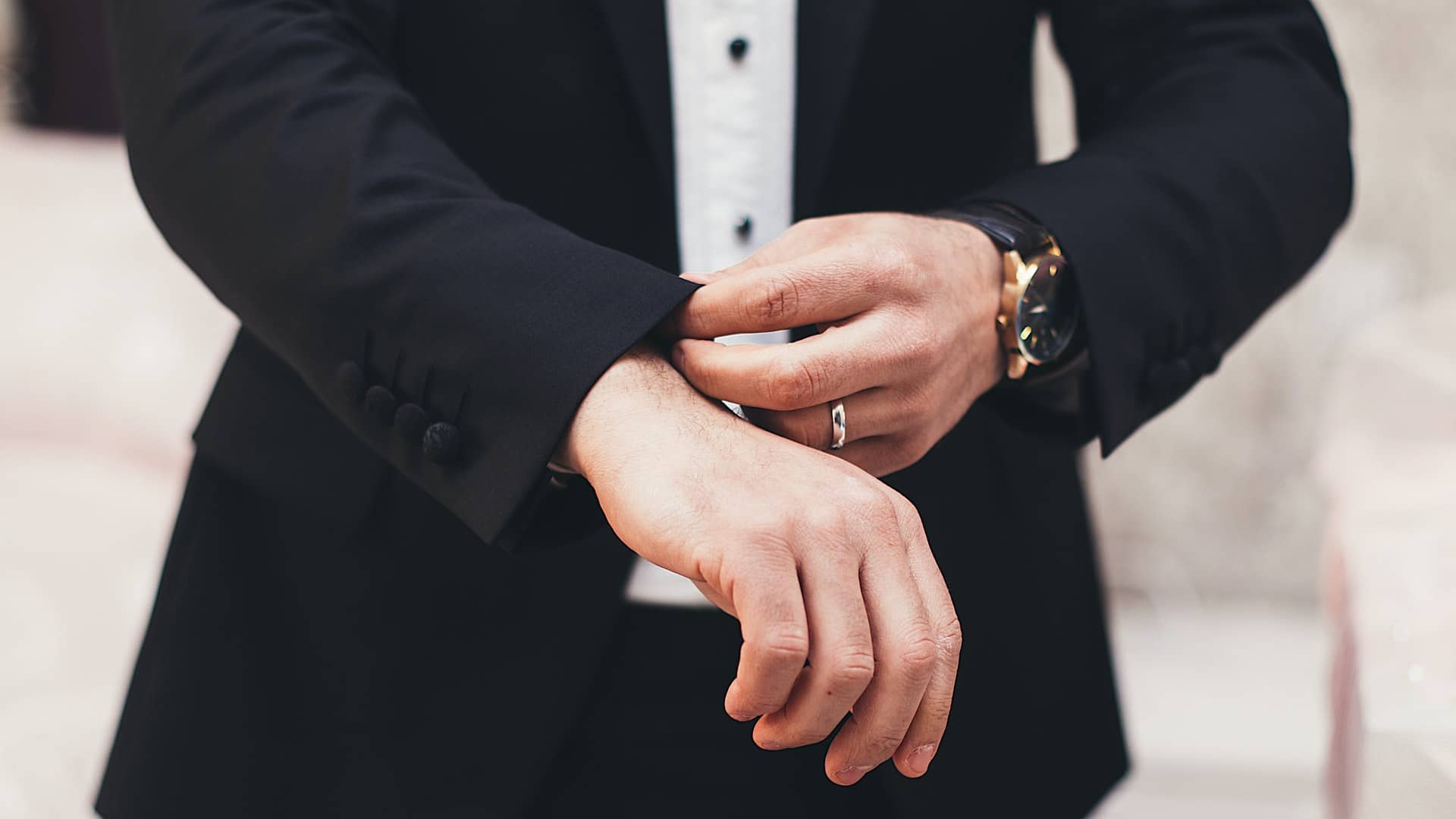It’s no secret that diamonds are treasured in jewellery for their beauty and status. But as with all precious commodities, there is a risk of fakes and duplicates circulating the market, meaning buyers must be vigilant when purchasing these high-brow gemstones.
With this in mind, how can you ensure you spend your money on the real thing? In this guide, we’ll cover some of the at-home methods you can use to determine whether a diamond is real, as well as the expert gemologist’s techniques that we undertake when examining diamonds.
For further information on cut, carat, clarity and more, read our extensive diamond guide.
How To Tell if a Diamond is Real at Home
Before seeking assistance from an expert gemologist, there are several quick at-home tests that you can carry out to help you determine a diamond’s authenticity.
Check the Sparkle
Diamonds are renowned for their brilliant sparkle, and it’s one of their key identifying features. For this reason, you can often tell if a diamond is genuine by how much it sparkles.
If you hold your diamond under a lamp and see intense light bouncing off in all directions, it’s a clear sign that your diamond is the real deal. However, some common fake diamonds, like moissanite, also sparkle. If you shine light through your stone and spot rainbow hues, the stone is more likely to be moissanite than real diamond.
The Fog Test
Without equipment, the fog test may be the easiest and quickest way to identify a fake diamond. All you need to do is simply breathe on the diamond, causing it to fog up. If the diamond is real, the fog should disperse quickly because of the diamond’s naturally high thermal conductivity. If the fog lingers for a while, however, it could indicate that the diamond isn’t authentic.
However, it’s important to remember that moissanite also has high thermal conductivity, so quickly dispersing fog doesn’t guarantee that your gemstone is a true diamond.
The Dot Test
The dot test is another very simple test at home, as you’ll need only a pen and paper. Draw a dot on your piece of paper and place your diamond on the dot, flat side down. Then, look at the paper through the pointed end of the diamond. If the dot’s reflection is visible, the diamond is a fake, as a diamond’s refractive properties would bounce the light in different directions.
This test also works with a newspaper or book. Simply place the flat side of your diamond over a letter and see if it can still be read.
The Water Test
Diamonds are famously dense, so they’ll sink rapidly when placed in water. If you place your diamond in water and it bobs below the surface, it’s a fake. This test is less effective, of course, if your diamond is set in metal jewellery such as an earring or bracelet, as a dense metal will cause the jewellery to sink regardless of whether or not the diamond is real.
The Scratch Test
Also, thanks to its high mineral hardness, a diamond is extremely hard to scratch. If you scrape a diamond against a pane of glass, the glass should be scratched but not the diamond. If your stone is scratched, it isn’t a diamond. However, it should be noted that some cubic zirconia, commonly used as a fake diamond, can scratch glass, too.
The UV Test
Many diamonds glow blue under UV light, whilst other stones rarely do. If you shine a UV light on your diamond and it glows blue, you can be almost certain it’s real. However, if your stone doesn’t glow blue, it doesn’t necessarily mean it’s a fake, so you may wish to check using one of the other tests or by taking your stone to an expert.

Expert Methods to Tell if a Diamond is Real
Of course, the best way to be truly certain of your diamond’s authenticity is to obtain expert certification. An expert gemologist can use specialised equipment and techniques to verify that your diamond is real and accurately classify and value it based on the four C’s
The Loupe Test
One of the specialist equipment a gemologist can use is a loupe. Gemologists use this specialised magnifying glass to test the clarity of a diamond, but it can also be used to identify fakes.
Flawless diamonds are incredibly rare and extremely valuable, so if your diamond has no flaws (known professionally as inclusions) visible through the loupe, it’s more likely to be fake. One exception to this is lab-grown diamonds, which are free from imperfections due to being man-made, although they are still real diamonds.
The Microscope Test
A 1200x power microscope can be an incredibly useful tool for spotting fakes. When observed under a microscope of this strength, cubic zirconia, a stone commonly used as a fake diamond, will show flashes of orange light.
The Electrical Conductivity Test
One of the lesser-known properties of diamonds is that they conduct electricity, whereas stones commonly used as fake diamonds, such as cubic zirconia and moissanite, cannot. Gemologists can use specialised equipment to test whether or not your stone can conduct electricity to confirm its validity.
The X-Ray Test
An X-ray machine is another excellent way to tell a real diamond from a fake. This is because diamonds are commonly radiolucent, meaning an X-ray can shine through them, making them appear clear. On the other hand, fakes like cubic zirconia are radiopaque, meaning they are resistant to X-rays shining through.
The Heat Conductivity Test
A heat probe is a special device that tests thermal conductivity by measuring how long a diamond retains temperature. If it’s a natural diamond, the thermal conductivity should be 2,000 watts per metre per kelvin, meaning heat should disperse rapidly.
The Scale Test
Weight is one way to tell cubic zirconia apart from real diamonds, as it typically weighs 55% more at the same size. Using the same specialised scales used to measure diamond carats, gemologists can identify even the tiniest weight differences to tell the real from the fake.

Why You Should Always Buy from a Reliable, Quality Jeweller
One of the best ways to feel confident that your diamond is real is to purchase your diamond from a reliable jeweller.
The Metal Test
A stone as beautiful and precious as a diamond would only ever be set in a metal befitting its status – gold, silver or platinum. If your diamond is set in a low-quality metal, then you can be certain that the stone is low-quality, too.
Check the quality of your metal by checking the hallmark – our guide to understanding jewellery hallmarks will enable you to identify the exact metal your piece is made of. While checking jewellery hallmarks, you should also look out for the letter C.Z. – These letters indicate that the stone in your jewellery is cubic zirconia rather than a diamond.
A Gemological Certificate
The most trustworthy jewellers will have your diamond examined and certified for you by an unbiased specialist gemological institute.
These certificates not only verify the authenticity of your diamond but also gradings of the clarity, colour, cut and carat so that you can fully understand the value of your gemstone.
Jeweller Reputability
There are several ways to check jeweller reputability, from word-of-mouth recommendations from trusted friends to checking their online testimonials.
The most trustworthy online jewellers are also typically assay-assured, a jewellery-specific digital trust mark collectively bestowed by the UK’s four assay (hallmarking) offices.



